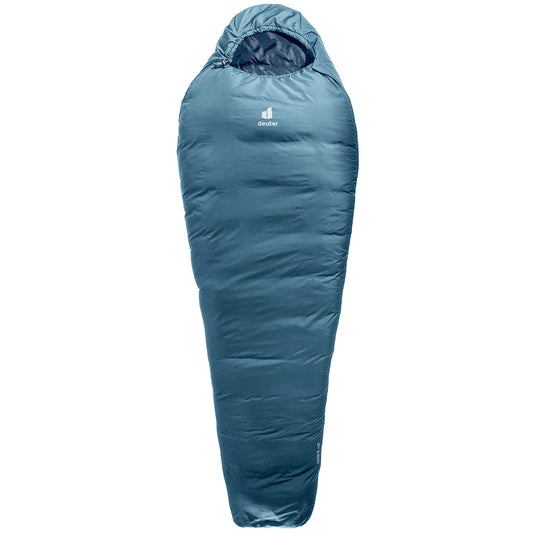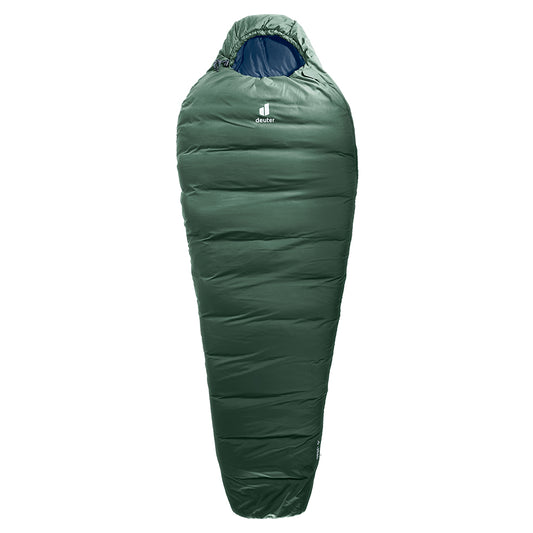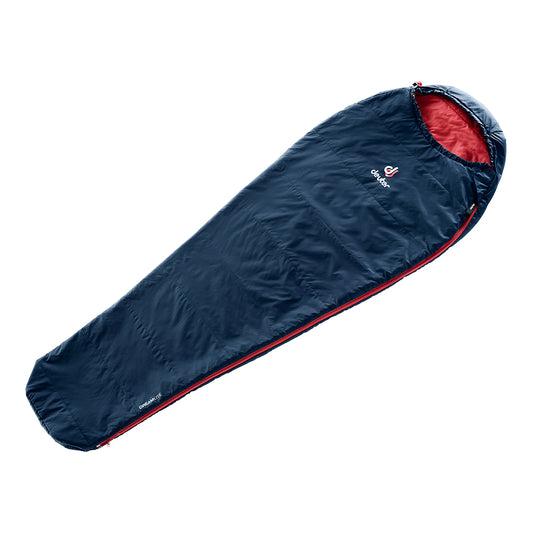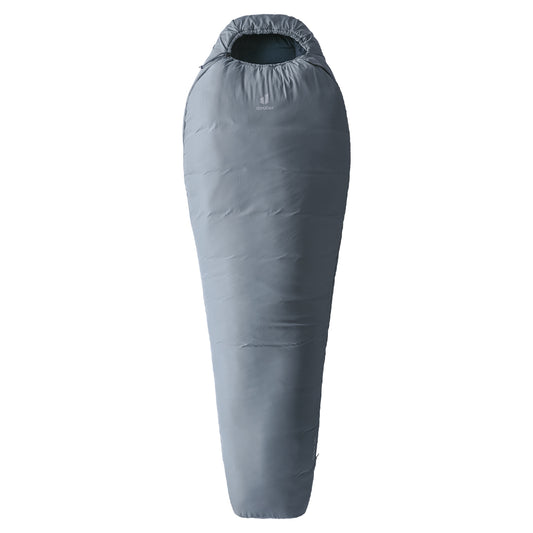HOW TO FIND THE IDEAL SLEEPING BAG
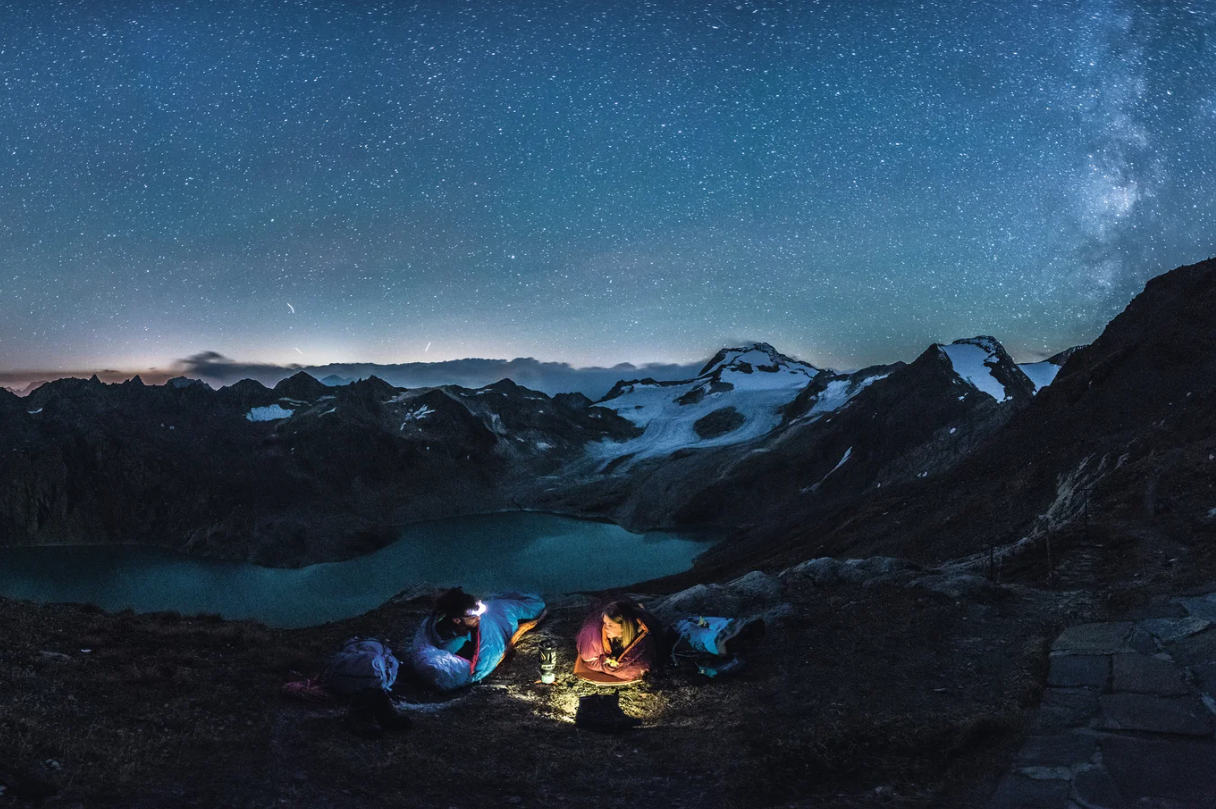
YOUR GUIDE TO CHOOSING, FROM MATERIAL TO TEMPERATURE RANGE
Sleep under the open sky and see the stars at night! The perfect sleeping bag keeps you warm—whether you're hiking through Norway or traveling the world in the Himalayas. Every destination and climate zone has different sleeping bag requirements—our sleeping bag tips will help you find the best sleeping bag for your outdoor adventure.
WHAT'S THE RIGHT SLEEPING BAG FOR ME?
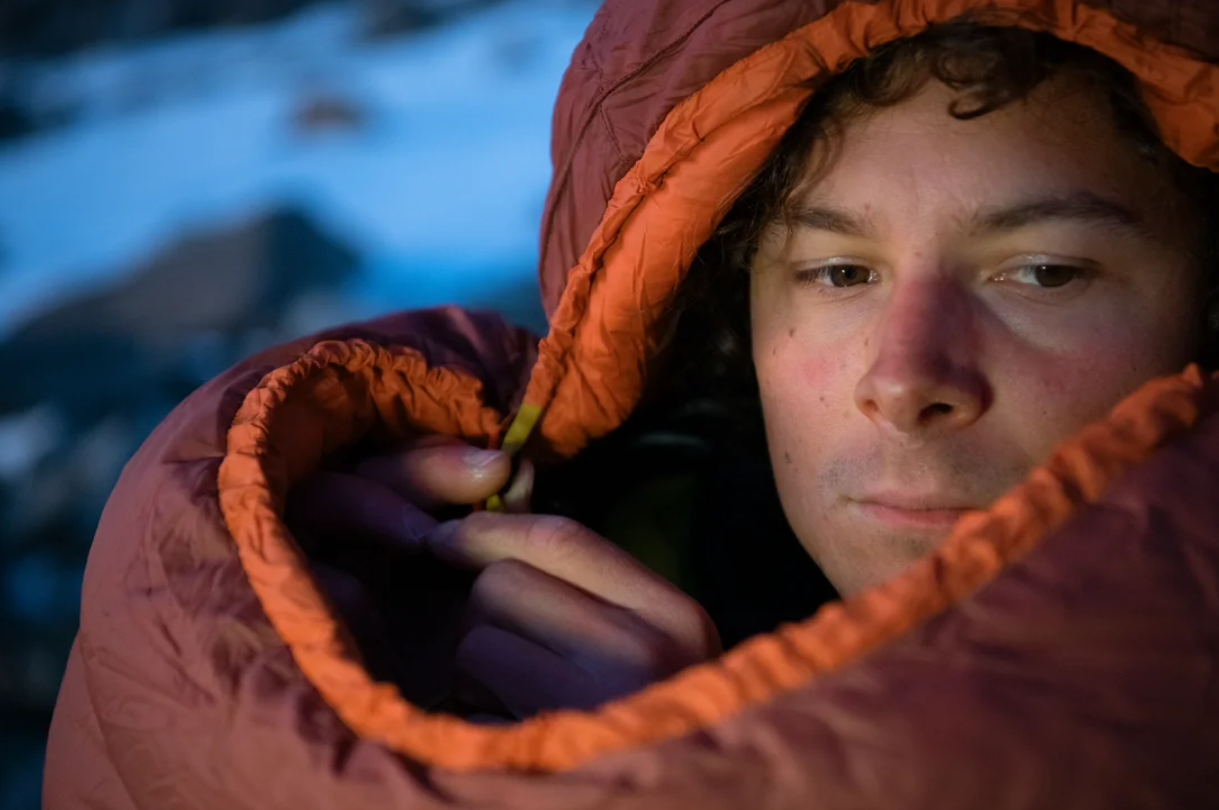
THESE ARE THE QUESTIONS TO ASK
Our sleeping bag tips are designed to answer any questions you may have:
- What will you use your sleeping bag for? These four factors will determine your sleeping bag choice.
- Synthetic fiber or down sleeping bag? Both materials have their pros and cons.
- What sleeping bags are available? At Deuter, you choose your sleeping bag based on material, purpose, or size.
- What temperatures should your sleeping bag withstand? Deuter includes the relevant information on its sleeping bags; however, how warm your sleeping bag should keep you also depends on your physical build.
- After You Buy Your Sleeping Bag: Tips for a Relaxing Night's Sleep
CRITERIA FOR A GOOD SLEEPING BAG
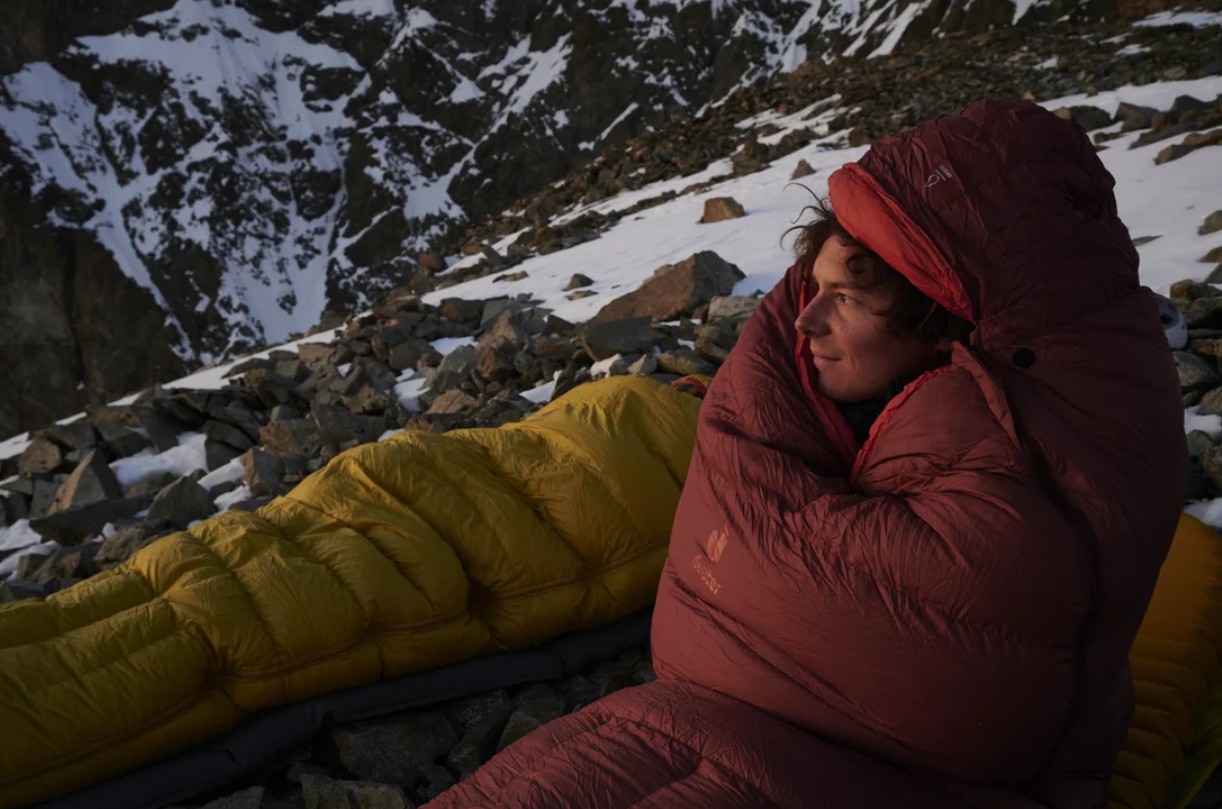
In fact, finding the right sleeping bag is quite easy if you know what you want to use it for. By answering the following questions, you can determine whether you should choose a down-filled sleeping bag or one made from synthetic fibers.
- Climate : Do you often travel to areas with a lot of rain? Or do you often travel from cabin to cabin? What's the climate like at your destination?
- Activity : How do you travel? Do you carry your sleeping bag with you or stay put?
- Space needed : Wide blanket or cozy mummy shape? The right size is often crucial. The tighter the sleeping bag, the faster it warms the cold air inside. However, it shouldn't be too tight either.
- Stress : The more frequent the change of location, the greater the mechanical stress during unpacking and filling.
WHAT TEMPERATURES DOES YOUR SLEEPING BAG NEED?
When indicating the temperature range in our sleeping bag advice, we use the European standard EN 13537, which creates a comparable standard and provides a basic guide to the thermal performance of our sleeping bags.
How we test: A calibrated, thermal, and hinged "adult" pacifier is placed inside the test sleeping bag, which is then placed in a climate chamber with a standardized environment. As the horizontal areas of the pacifier are subjected to a specific heat output, sensors measure the temperature difference between the inner and outer surfaces over several hours. The respective temperature range is calculated from the results.
TEMPERATURE RANGE
- Comfort T(COM): indicates the lower temperature limit at which a standard woman (25 years old / 60 kg / 1.60 m) can sleep comfortably during a night. Even an inexperienced user will feel completely comfortable at all times in this range.
- Lower Limit T(LIM): indicates the lower temperature limit at which a typical man (25 years old / 70 kg / 1.73 m) can sleep comfortably during a night. To stay warm in this range, the user may have to adapt to the conditions through clothing and behavior.
- T(EXT) Extreme: Indicates the lowest maximum temperature a normal woman can tolerate for 6 hours in extreme cold. There's no chance of sleeping here. In the extreme range, you can expect to feel very cold. Hypothermia poses a health risk.
OTHER CRUCIAL FACTORS IN CHOOSING YOUR SLEEPING BAG
These standardized indications provide laboratory values only. They are designed to ensure good comparability between products from different manufacturers. Each person's physical constitution is different and they react individually to certain conditions, so this information serves only as a guide for purchasing decisions . Consider the following points:
- People have more determining factors for heat than a "mannequin" in a climate chamber. For example, men and women perceive temperature differently; age, physical fitness, and experience. Other factors that influence performance in the heat include fatigue levels (exhaustion versus well-restedness), but also lack of food or excess alcohol (which make you feel cold more quickly).
- The external circumstances that are “normalized” in the climate chamber play a fundamental role in real life and contribute to the optimal use of “thermal performance”.
- A good mattress will insulate the sleeper from the floor.
- Functional, dry, moisture-wicking underwear (including a hat!) and a sheltered sleeping area are important, as wind and humidity significantly impair restful sleep.
- Standardized measured values are determined in the climate chamber. Keep in mind that multi-day activities or harsh natural conditions have completely different requirements, so it's important to prepare for the relevant conditions.
TIPS FOR A GOOD NIGHT'S SLEEP IN YOUR SLEEPING BAG
However, the right sleeping bag is only half the story: it's also important where, on what and how you sleep!
-
Sleeping Pad: Cold ground or circulating air can draw heat away from your body, even through the best sleeping bag! This heat transfer should be avoided by using a well-insulated sleeping pad.
- Wind protection : Wind causes a wind chill! The wind chill factor means that the body perceives +5°C in a light breeze (25 km/h) as 0°C. A tent, a bivy bag, or even a rock can protect you from extremely cold air exchange (B). Find your sleeping spot in a location well protected from the wind.
- Functional underwear: Sleeping bag warmth can be easily maximized by wearing warm, long functional underwear and socks. Dry clothes on your feet also provide additional insulation.
-
Hat: In your sleeping bag, your head or face are the only contact with the cold outside world. A cold head causes the rest of your body to lose heat as well. A hat, perhaps even a balaclava, offers very effective protection against the cold.
- Sufficient food: The body needs a lot of energy when climbing, hiking, cycling, etc. Anyone who cannot replenish their energy reserves by not eating enough will not be able to produce enough heat and will feel cold more quickly.
- Plenty of fluids: Drink plenty throughout the day, as your body stops producing enough heat when dehydrated. Before sleeping in your sleeping bag, a cup of tea or hot chocolate is a good way to warm up.
- Avoid alcohol: Don't drink too much alcohol in cold temperatures. Alcohol initially creates a warming sensation, but when it wears off, you feel even colder.
- Keep everything dry: Clothing and sleeping bags, especially down-filled ones, have less insulation when wet than when dry. The supposedly warm socks you were wearing cool down very quickly due to evaporation. Avoid getting into your sleeping bag with sweaty clothes. A change of clothes will stay dry in a waterproof backpack . And whenever possible, leave your sleeping bag aired out—for example, on top of your tent.
SLEEPING BAGS OPTIONS FOR YOU
-
Deuter Orbit Sleeping Bag 0°C to -23°C Left Zipper -5° L
Regular price R$ 1.528,90Regular priceUnit price / perR$ 1.528,90Sale price R$ 1.528,90 -
Deuter Orbit 0° Sarcophagus Sleeping Bag +5°C to -14°C
Regular price R$ 1.211,90Regular priceUnit price / perR$ 1.211,90Sale price R$ 1.211,90 -
Deuter Dream Lite L 3°C to 16°C Sarcophagus Sleeping Bag
Regular price R$ 941,90Regular priceUnit price / perR$ 941,90Sale price R$ 941,90Sold out -
Deuter Orbit +5° Sarcophagus Sleeping Bag 9°C to -9°C
Regular price R$ 1.198,90Regular priceUnit price / perR$ 1.198,90Sale price R$ 1.198,90Sold out

